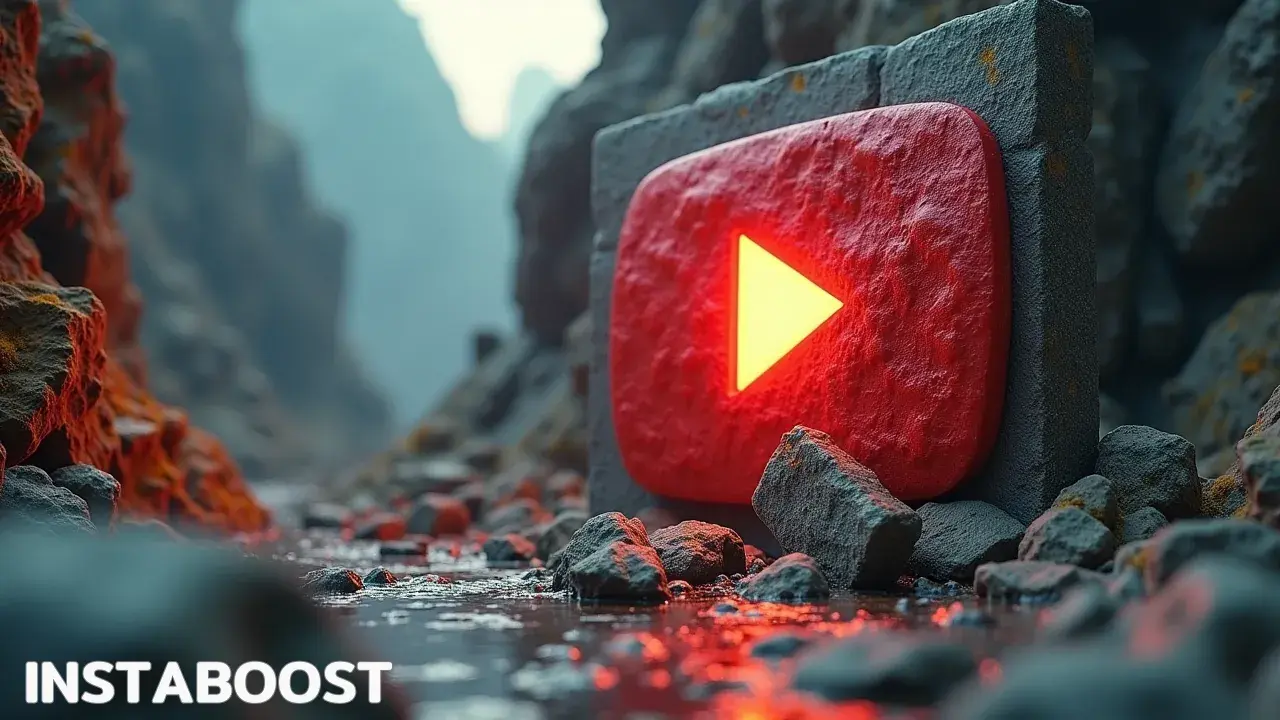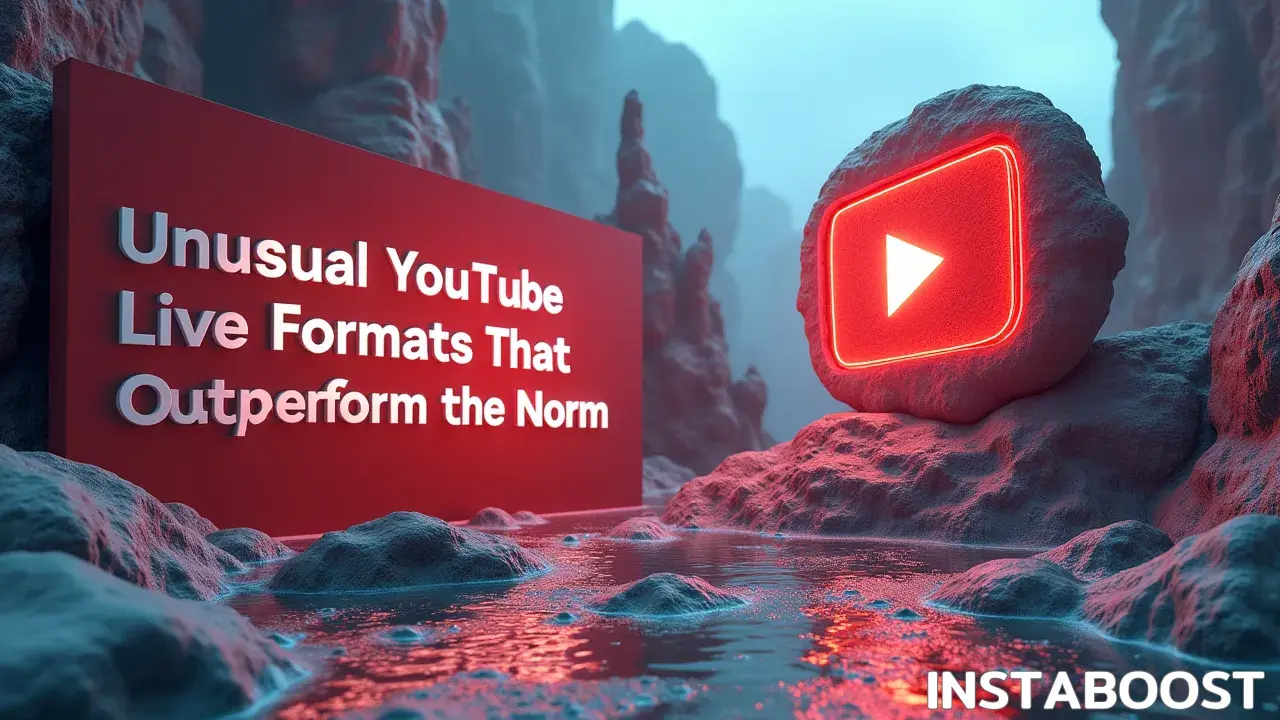Which Unusual YouTube Live Formats Outperform the Norm?
Some unconventional YouTube Live formats can outperform regular streams when they spark curiosity and interaction. Formats that break routine, invite real-time participation, or remix content structures often earn higher engagement than standard broadcasts. The key is aligning the unusual format with audience expectations while keeping the experience coherent and watchable. Testing a few creative approaches and tracking response helps identify what truly elevates the next broadcast.
Breaking the Mold: Rethinking What “Live” Can Be
When most people think of YouTube Live, they picture game streams or someone talking straight to the camera, but there’s actually quite a bit more happening if you look around. You’ll find streams where someone’s just driving across the country, or walking through a city with their phone, or quietly working at a desk while a timer runs.
A lot of people keep these on in the background while they study, clean, or wind down at night. There’s something steadying about being able to check in on someone else’s routine, or just having a bit of company while you go about your own stuff. It isn’t always about pulling in thousands of viewers or creating a big moment – sometimes it’s just about having some steady company and a little bit of structure.
A lot of people keep these on in the background while they study, clean, or wind down at night. There’s something steadying about being able to check in on someone else’s routine, or just having a bit of company while you go about your own stuff. It isn’t always about pulling in thousands of viewers or creating a big moment – sometimes it’s just about having some steady company and a little bit of structure.
What stands out is that these kinds of streams often get people to stick around longer, and the chats usually feel more relaxed and supportive. The numbers show it – these so-called “niche” streams can actually help a channel grow faster than the big, polished ones. It starts to seem like a lot of viewers want something more grounded, just the sense that someone else is out there too, quietly getting through the day.
For people making these streams, it turns into a way to build a real community – even if it doesn’t look like the usual idea of a “successful” livestream on YouTube. And as the platform keeps changing, it’s these practical, sometimes overlooked formats that seem to show what people actually come back for, even if it’s not the kind of thing you notice right away; sometimes that ends up being the best way to improve your YouTube strategy without really trying.
For people making these streams, it turns into a way to build a real community – even if it doesn’t look like the usual idea of a “successful” livestream on YouTube. And as the platform keeps changing, it’s these practical, sometimes overlooked formats that seem to show what people actually come back for, even if it’s not the kind of thing you notice right away; sometimes that ends up being the best way to improve your YouTube strategy without really trying.

Why Odd Formats Win: The Data Behind Success
I didn’t really expect this method to work, but it did, though not for the reasons I thought it might. When I started paying more attention to some of the less conventional YouTube Live streams – things like slow walking tours, long “study with me” sessions, or just a camera on an aquarium – I noticed their engagement stayed steadier than a lot of the usual live shows. These streams weren’t flashy and there wasn’t much talking. What pulled people in seemed different: viewers hung around longer, the chat moved at a slower pace but felt more straightforward, and people kept coming back, almost like it became part of their routine.
Looking at the analytics, there were patterns – viewers would spike if something unexpected happened, like rain during a walk or an animal showing up. It looked like those small, unscripted moments mattered more than any planned content. There’s something about people wanting to watch things that aren’t overly produced. Advertisers are catching on too, putting money into these streams – not for huge numbers, but because the people who tune in tend to stay.
What really surprised me is how some of the fastest-growing channels aren’t driven by big personalities or nonstop entertainment, but by just being consistent – a steady atmosphere, a glimpse into someone’s regular day, or a place you can drop into whenever. I guess these streams build trust with followers just by being there, day after day. It makes me wonder what else might work if you focus less on trying to stand out and more on just being steady and showing up.
Blueprints for Standout Live Streams
If you just put content out there without thinking it through, it usually disappears, even if it looks great. When you want YouTube Live streams that are a bit off the usual path to actually work, it really takes being deliberate about each decision – not just tossing out random ideas and hoping one works. Like with those “study with me” streams: it might seem like it’s just someone sitting and working, but there’s a structure behind it – timers, background sounds, and a plan for what’s getting done.
That’s what keeps people watching; it gives them something to settle into and helps them focus. Even the streams that seem strange – like hours of a train rolling through the countryside or just an aquarium – only work because someone thought about what people might want from watching. Maybe it’s background noise, or something relaxing, or just a way to see something different when you can’t go anywhere. The live streams that actually last, even the odd ones, are usually made by people who know exactly what they’re trying to do, and every detail fits that. That’s probably why so much of the engagement, even things like likes from active viewers, tends to show up when there’s a clear intention behind it all.
So when those unusual streams get more interest than the standard ones, it’s not just because they’re strange. It’s more that the people making them have really paid attention to what viewers might want, and they build everything around that. That seems to be what makes the difference, most of the time.
So when those unusual streams get more interest than the standard ones, it’s not just because they’re strange. It’s more that the people making them have really paid attention to what viewers might want, and they build everything around that. That seems to be what makes the difference, most of the time.
The Myth of Effortless Authenticity
I’ve always been skeptical when people say they actually enjoy this part. You hear these platform “experts” insist that setting up odd YouTube Live streams – like aquarium cams or study rooms – should be simple, but they leave out how much work goes into making it look easy. The thing about these streams is that none of it’s really accidental. Every detail, even in something as calm as a “cozy overnight train ride” stream, comes from a lot of trial and error: testing out sounds, adjusting camera angles, figuring out how to keep it inviting without interrupting the mood. Advice like “just be yourself” doesn’t really fit, because the people making these streams work seem to know what to tweak and what to leave alone.
Even channels that feel like someone just left a camera running have actually spent time on lighting, reading chat patterns, thinking about the best times to be live. Some even consider ways to promote your channel effectively without messing up the atmosphere. So when people call these streams “effortless” or say they’re good because they’re “real,” I don’t completely buy it. It’s a lot of small decisions, a lot of quiet adjustments behind the scenes. I think that part gets missed when people try to copy the trend without noticing what actually goes into it
Why Discomfort Drives Engagement
Feeling a little uneasy while watching is actually the point. The YouTube Live streams people remember are usually the ones that do something different from what you’d expect – something most creators avoid. When a stream skips the usual structure, like long stretches of almost nothing happening, someone just sitting quietly, or a camera on something ordinary like a fish tank, it makes you notice your own reaction. You start to wonder what you’re supposed to get out of it, or why you haven’t clicked away yet, and that awkwardness is kind of what makes it interesting.
These streams go past regular entertainment and get at a sort of curiosity where you’re not sure what’s next. It can feel a bit uncomfortable, a little boring, but you keep watching. People come back, not because that weird feeling goes away, but because it’s different from the usual fast-paced or polished videos.
Sometimes, that unsettled feeling is why these streams catch on. Viewers who want something that doesn’t feel processed are drawn in. For creators, it means there’s something to formats that seem odd or unfinished at first. Like when you’re thinking about how to distribute YouTube content, it’s a reminder you don’t have to chase every trend – sometimes it’s worth sticking with what feels a bit unresolved. If you’re planning YouTube Live ideas, it can help to notice what makes you stop and pay attention, even if you’re not sure why. That might be the thing that lingers with people, even if it doesn’t fit the usual pattern















